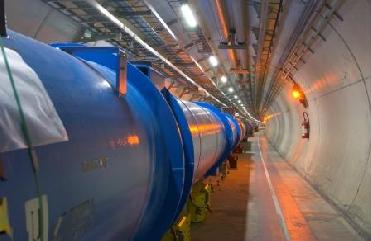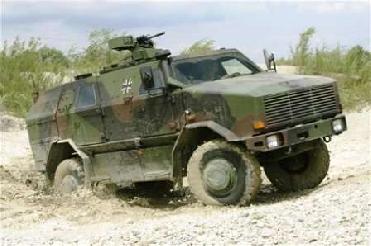
GENEVA (PTI): Replicating conditions preceding the Big Bang that formed the universe, scientists at the world's biggest atom smasher here have collided two proton beams into each other at record speeds that could herald a new era of discoveries.
"We are on the threshold of a new era of science and if we are lucky, within a few months we would be able to make a string of new discoveries," Guido Tonelli, a spokesman at the European Organisation for Nuclear Research (CERN), told reporters.
Scientists gathered across the five control rooms of the 27-km long underground Large Hadron Collider (LHC) burst into cheers as the detectors recorded the collisions of proton beams at 7 trillion electron volts or close to the speed of light.
Dubbed as the world's largest scientific experiment, the USD 10 billion LHC holds the promise of revealing details about theoretical particles and microforces, Satyaki Bhattacharya, a Delhi university professor who has been involved with the experiment, said in New Delhi.
He said that the scientists were on a hunt to detect the elusive Higgs boson which is considered as a missing link in the Standard Model of particle physics.
"All particles, except the Higgs boson, described in the Standard Model have been detected. If we fail to detect this elusive particle a lot of theories of physics will have to be reworked," said Atul Gurtu, senior professor at the Tata Institute of Fundamental Research, in Mumbai.
There were initial hiccups as problems developed with the beams forcing scientists to "dump" the protons from the collider and inject new ones.
"First, the system had to be reset after the power supply to it tripped while the second time the general electrical disturbances in the area triggered the Quench Protection System shutdown," a scientist at CERN said.
This resulted in delay of a few hours before the beams could be set in motion again and ramped up gradually to 3.5 terra electron volts (TeV). Scientists then took time to stabilise the two beams at 3.5 TeV and finally triggered collisions at 4:35 p.m. IST.
When the proton beams collide, hundreds of millions of collisions per second would take place and powerful detectors installed at the site would gather data of each of the collisions.
It is the analysis of this data that could lead to the discovery of the Higgs boson, also called as the 'God particle', that is believed to have existed when the universe was born, said Bhattacharya.
Rolf Heuer, Director-General of CERN, said it is likely to take months before any scientific discoveries are made, partly because computers will have to sort through massive amounts of data produced by the collisions.
Researchers will sift through the subatomic debris of proton collisions for signs of extra dimensions that will bolster belief in "supersymmetry", a theory that doubles the number of particle species in the universe.
Other results may point to "hidden worlds" of particles and forces that we are oblivious to because they do not interact with everyday matter.
The data of the collisions will now start flowing to various computing centres across the world. The Tata Institute of Fundamental Research (TIFR) is one such centre which has supercomputing facilities which would be used by scientists to analyse the data.
"We have 400 terra bytes of storage capacity and are adding another 250 terra bytes," said Gurtu.
The LHC is designed for colliding two 7 TeV proton beams, but scientists decided in January to operate the machine at half the power until the end of 2011. The machine will then close for a year of further engineering work to ensure it can run at full power in 2013 without breaking down again.
For scientists at CERN and elsewhere, the beginning of high-energy collisions will end a long period of working without any real data. Until recently, many physicists have had to make do with computer simulations of particle collisions.
Much higher energy collisions take place constantly in nature, when particles in cosmic rays slam into clouds of interstellar gas, heavenly bodies and ions in the Earth's atmosphere.
 Previous Article
Previous Article Next Article
Next Article













The Indian Air Force, in its flight trials evaluation report submitted before the Defence Ministry l..
view articleAn insight into the Medium Multi-Role Combat Aircraft competition...
view articleSky enthusiasts can now spot the International Space Station (ISS) commanded by Indian-American astr..
view article